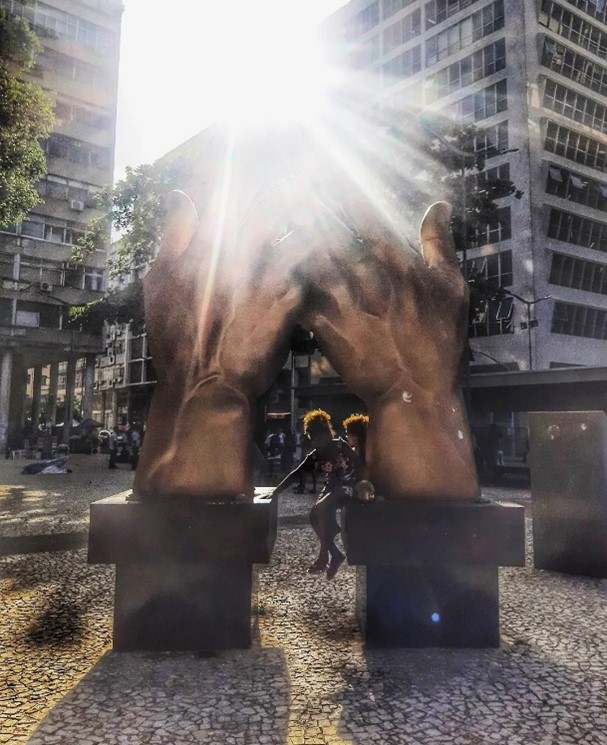Contrary to many western images of ‘street children’ in the Global South, many of these children and young people are not simply orphans, homeless or abandoned. Many street-connected children and youth have existing bonds with their families, even if these bonds may be ambiguous or distant. In most countries of the Global South, different social problems caused by extreme poverty seem to be the main reasons why children and youth search for alternative forms of survival on the street environment. While survival is a great part of these children’s and young people’s everyday lives, they cannot be rendered to passive victims of exploration and poverty and they should be understood within a multilayered perspective.
Street-connected children and young people are highly mobile; they often dynamically change their environment between, for instance, their family homes, street settings, and support systems. Therefore, focusing solely on their direct street environment can ignore other potentially important sites in their lives. Even when children and youth move between different important settings, often family members are present in their lives either psychologically and/or concretely. Now, we address how our research findings with street-connected children and youth implicate the need for family-focused work methods.

The role of family
We have done ethnographic fieldwork with street-connected children and youth in Maputo, Mozambique and in Recife and Salvador, Brazil. Although these children’s and young people’s life trajectories are impossible to narrow down to simple descriptions, a common theme in both our research was the important, and meanwhile ambivalent, role of family for them. For example, the ambivalence of returning home and the will to help his family was present in Paito’s (14) description (Maputo, 2009):
I was tired sleeping without food at my grandfather’s home. I thought that coming to the city I would get a job and be able to help my grandfather with home expenses. I was wrong; since I came here the only thing I do is clean cars, sell bottles and sleep on the streets. I have nothing here, and hunger is even worse than at home, but I just cannot go home, because I don’t know what to tell my grandparents about what I have been doing.
17-year-old Larissa (Recife, 2019) described how she and her family members hoped she would leave street life and be more at home:
These days I was on the street a lot, I slept on the street, and she (mother) came to take me home. Sometimes I go with her, sometimes I don’t. But this time I went because I missed my mum. She has been on the street before, she knows how dangerous it is. She said that she wants to buy a Playstation for me, my stepdad and sister to play. For me to leave the street. I will leave. Clothes, food, games… She is trying hard. My mum said there is a bad spirit on the street. It takes people’s lives. She does not want me to be on the street. There are many bad people. My family, they wish I would come back home.
These examples from Paito and Larissa demonstrate a fraction of the wide descriptions of families that our participants expressed, but they can help to illustrate the connections of street and family relations in young people’s lived realities. The fact that these children and youth tend to be portrayed as orphans or abandoned is a harmful discourse because it ignores the significance of family in their lives. The concept of broken family ties needs to be questioned because children and youth think and talk about their families a lot. The will to be reunited with family, especially with emotionally close family members, was expressed frequently by our participants. However, to fully understand the dynamics of these family ties of street-connected children and youth it’s important to look at their psychological, cultural and social settings.

Building roads to reintegration
Many organisations working with these children and young people value their family relations, and for a good reason. Also, both our research emphasizes that family-focused work methods should be present when aiming to help an individual child or young person on the street. In many situations both the children and their family members hoped to have a better relationship and had the will for the child to have a family reintegration. Still, there are as many family situations as there are young people and hence, we cannot say reintegration should always be the right option. However, we recall the need to acknowledge the family situations of these children and young people and see them beyond mere victims passively waiting to be saved from the street. It is important to strengthen work practices which acknowledge street-connected children’s and young people’s agency, important relationships and mobile realities. Children’s and young people’s right to live with their families should be supported except when not in their best interests.
Because no one is born from the asphalt.

Writers:
Miguel Marrengula is a Doctor in social work. He has published papers and books regarding street-connected children and youth in Mozambique, focusing on socio-cultural animation, social work practices for child welfare in Mozambique and local development issues.
Annika Lehtonen is a Doctoral Student in social work at Tampere University, Finland. Her master’s thesis is about street-connected children’s and young people’s family relations in Recife, Brazil, and her PhD thesis (in progress) focuses on the social worlds of street-connected children and youth in Northeast Brazil.

